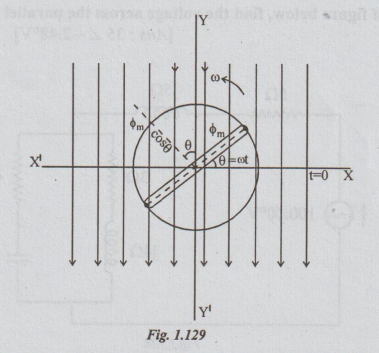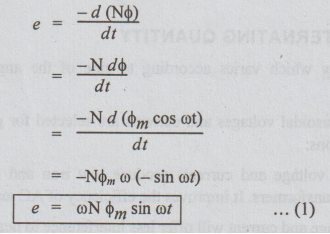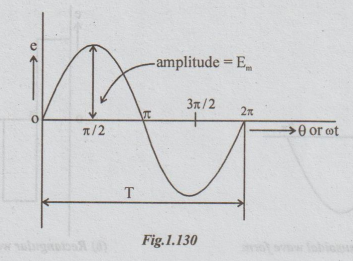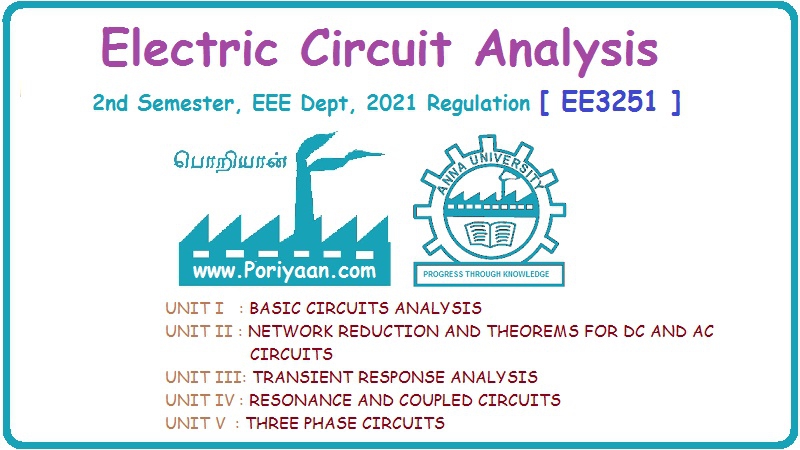Electric Circuit Analysis: Unit I: b. Basic circuits analysis
Equation of sinusoidally varying emf and current (sinusoidal functions)
Consider a rectangular coil with N turns. It is rotated in an uniform magnetic field in anticlockwise direction.
EQUATION OF SINUSOIDALLY VARYING EMF AND CURRENT (SINUSOIDAL
FUNCTIONS)
Consider
a rectangular coil with N turns. It is rotated in an uniform magnetic field in
anticlockwise direction.
Let
B = flux density of the field in weber/m2 (or) tesla
ω = angular velocity of the coil in radians/sec.

The
time is measured from the positive x-axis. After 't' seconds of rotation, the
coil is rotated through an angle θ = ωt.
In
this position, resolve the flux into two components. One component is
perpendicular to the plane of the coil. The other one is parallel to the plane
of the coil. The component of flux at right angles to the plane of the coil is
ϕ
= ϕm cos θ
=
ϕm cos ωt
Only
this flux links with the coil. The instantaneous emf induced

When
sin ot is maximum (=1), then e is maximum and is denoted by Em
i.e.,
Em = ω Nϕm … (2)
Therefore,
the above equation for e becomes
e
= Em sin ωt = Em sin θ ... (3)
The
above equation is called the standard sinusoidal equation of the voltage. The
value of e depends upon sin θ.
The
above equation can be graphically represented as below. It is called voltage
wave form.

Note:
1.
The magnitude of maximum emf depends upon (a) angular velocity (b) number of turns
and (c) maximum flux. It does not depend upon the angle.
2.
The value of instantaneous emf e depends upon 0. In other words it depends upon
the time for a given speed (since θ = wt).
3.
The standard equation of sinusoidally varying voltage is, instantaneous voltage
= maximum voltage x sin θ.
4.
The standard form for a sinusoidally varying current is
i
= Im × sin θ
Electric Circuit Analysis: Unit I: b. Basic circuits analysis : Tag: : - Equation of sinusoidally varying emf and current (sinusoidal functions)
Related Topics
Related Subjects
Electric Circuit Analysis
EE3251 2nd Semester 2021 Regulation | 2nd Semester EEE Dept 2021 Regulation
